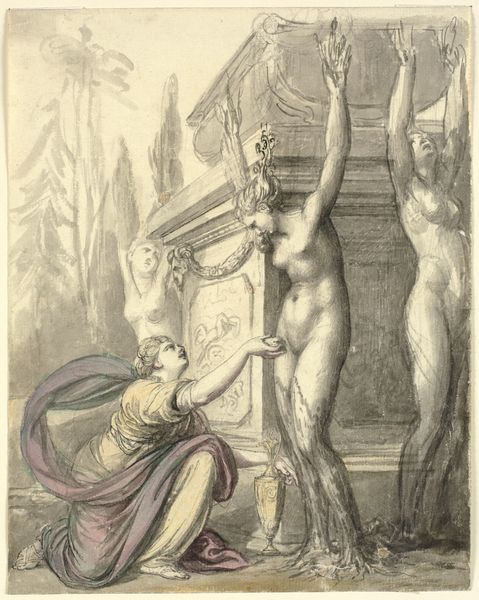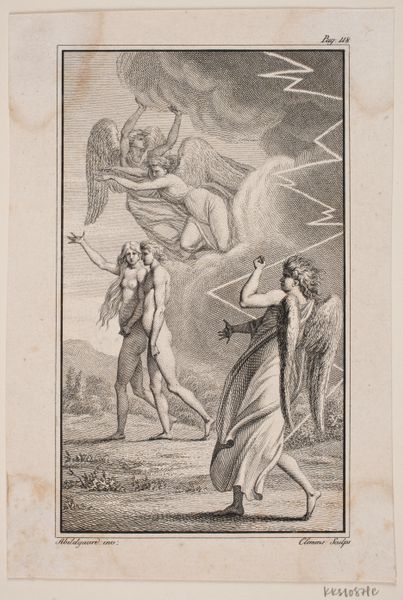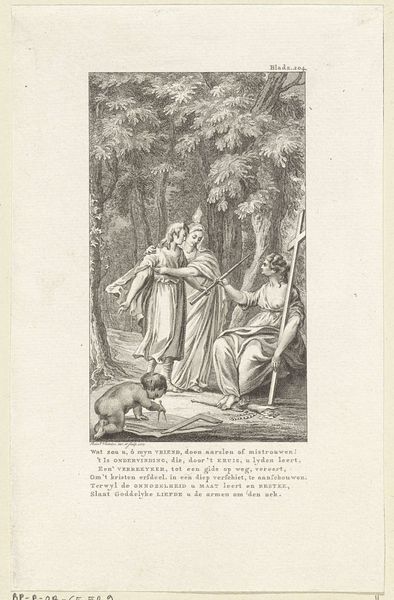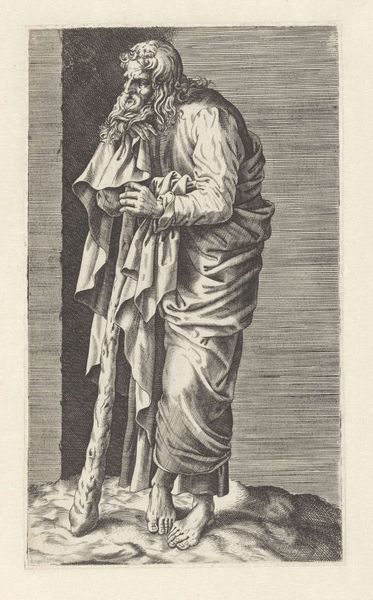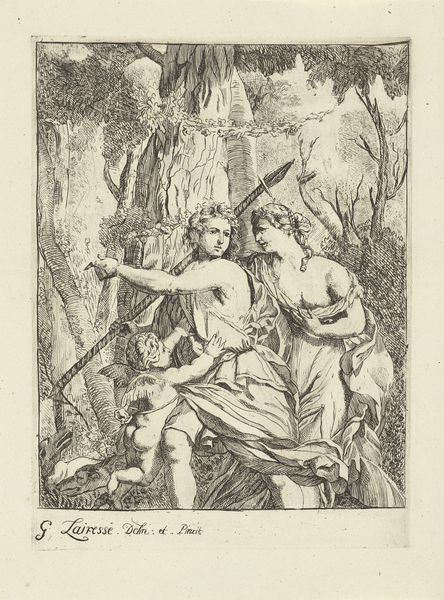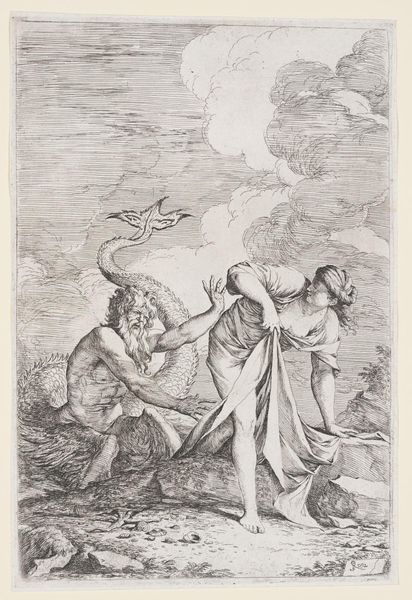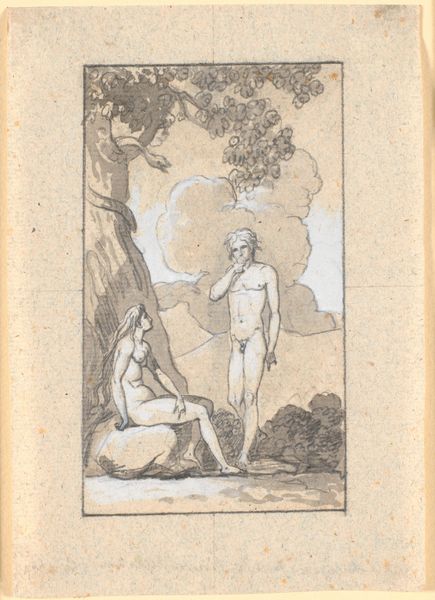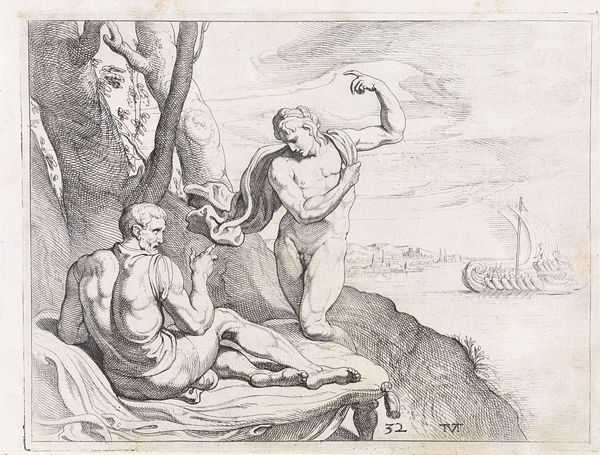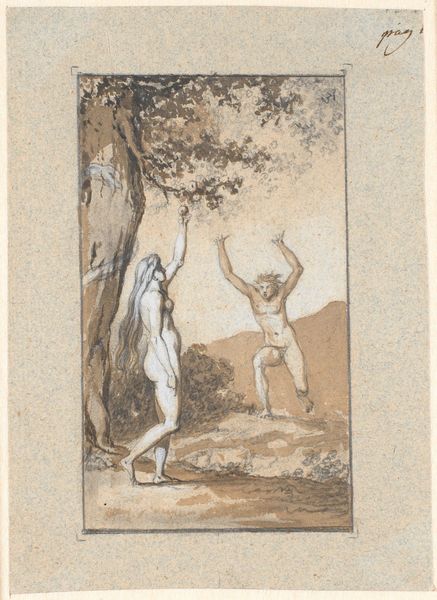
Christ Tempted by Satan to Turn the Stones to Bread 1819
0:00
0:00
williamblake
Fitzwilliam Museum (University of Cambridge), Cambridge, UK
watercolor
#
narrative-art
#
landscape
#
figuration
#
handmade artwork painting
#
oil painting
#
watercolor
#
jesus-christ
#
romanticism
#
history-painting
#
watercolor
#
christ
Dimensions: 13.3 x 16.8 cm
Copyright: Public domain
Editor: So, here we have William Blake’s "Christ Tempted by Satan to Turn the Stones to Bread" from 1819, done in watercolor. The figures feel really monumental, but there's something so delicate and ethereal about the colors. What leaps out at you when you look at this work? Curator: Ah, Blake. Ever the visionary rebel! What grabs me is the *weight* of choice, you know? Look at the muscular tension, particularly in Christ's back. Blake wasn't interested in surface beauty, darling, but the inner struggle. He's portraying the temptation not just as a suggestion, but as a wrestling match with the very soul. Doesn’t the light radiating around Christ seem almost… defensive? Editor: Defensive? That's a new way to see it. I always thought of the halo as purely symbolic of holiness. Curator: But holiness is a *fortress*, isn’t it? And who needs a fortress more than someone under attack? Consider the way Blake renders Satan – he’s not some monstrous figure, but a kind of world-weary sage. What do you make of the fact that Blake places Christ with his back toward the viewer, rather than looking outwards? Editor: Maybe to emphasize the internal nature of the struggle, as you were saying? It’s like we’re invited into that very personal moment of decision. It makes you wonder about your own temptations and how you respond to them. Curator: Exactly! It’s a mirror, darling. Blake is asking us: What bread would *we* conjure, if we had that power? He understood that the real drama wasn't in the flashy miracle, but in the quiet, agonizing choice between power and purpose. Gives you goosebumps, doesn't it? Editor: It does. I hadn't really considered the *internal* conflict so vividly before. I came looking at colors and brushstrokes, but left with a spiritual workout! Curator: And isn't that just the delicious genius of Blake? He lures you in with beauty, then whacks you over the head with truth. A true original.
Comments
No comments
Be the first to comment and join the conversation on the ultimate creative platform.
